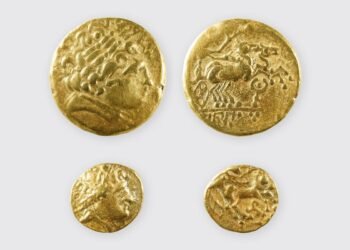A study published in Science Advances reveals that Viking hunters, in search of walrus ivory, ventured deep into the High Arctic, where they likely encountered the Thule Inuit, a group of Indigenous North Americans who inhabited regions of modern-day Greenland and Canada. This discovery highlights a little-known connection between Europe and North America long before the 15th century.

In medieval Europe, walrus ivory was a valuable commodity, coveted for its use in carving fine art, religious objects, and luxury items. The Norse, known for their seafaring and trade, initially hunted walruses near their settlements in Iceland and southern Greenland.
However, a recent study using genetic “fingerprinting” of walrus tusks has shown that the prized ivory came from much more remote locations than previously thought, specifically from the High Arctic, particularly around North Water Polynya—an area between Greenland and Canada.
Dr. Peter Jordan, an archaeologist at Lund University in Sweden and senior author of the study, said: “What really surprised us was that much of the walrus ivory exported back to Europe was originating in very remote hunting grounds located deep into the High Arctic.”
This discovery contradicts earlier assumptions that the Norse only hunted walruses near their Greenlandic settlements. The new evidence suggests they traveled up to 6,000 kilometers into the Arctic, indicating not just advanced seafaring skills but also the possibility of interactions with the Thule Inuit.
The Thule Inuit were well-adapted to the Arctic environment and had developed advanced hunting tools, such as toggling harpoons, which allowed them to efficiently hunt walruses in open waters. While there is no definitive proof of direct trade or social interaction between the Norse and the Thule, the overlapping hunting grounds point to a strong likelihood that they encountered one another. “This would have been the meeting of two entirely different cultural worlds,” Jordan explained, highlighting the contrasting appearances, technologies, and lifestyles of the Norse and the Thule.

This area of the High Arctic was also home to another Indigenous group, the Tuniit (or Late Dorset). Though less is known about direct contact between the Norse and the Tuniit, the evidence of both groups’ presence in these remote regions suggests a complex web of interactions, possibly involving trade.
Emily Ruiz-Puerta, a researcher at the University of Copenhagen and lead author of the study, said, “Our results suggest that the relationship between the European Norse and Arctic Indigenous peoples, particularly the Thule culture, was more complex than previously understood.”
To further investigate how Norse seafarers might have navigated these treacherous Arctic waters, another team member, archaeologist Greer Jarrett, conducted experimental voyages in reconstructed Norse clinker-built boats. Jarrett’s research demonstrated that the Norse were capable of making the perilous journey north, departing from their Greenlandic settlements during the brief summer thaw when sea ice retreated.
“Walrus hunters probably departed as soon as the sea ice retreated,” Jarrett explained, noting the tight seasonal window within which the Norse would have hunted, processed, and transported the ivory back to Europe.
The discovery of these northern ivory trade routes and potential cross-cultural exchanges has shifted scholarly debates about the Viking Age. Until now, discussions on early globalization focused on Viking interactions with Asia via the Silk Road. However, this new study proposes the existence of an “Arctic Ivory Road”—a far northern counterpart that connected North America with European markets centuries before the more widely recognized global trading systems of the Renaissance.






















